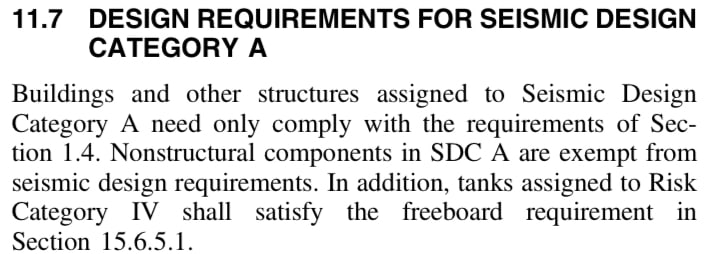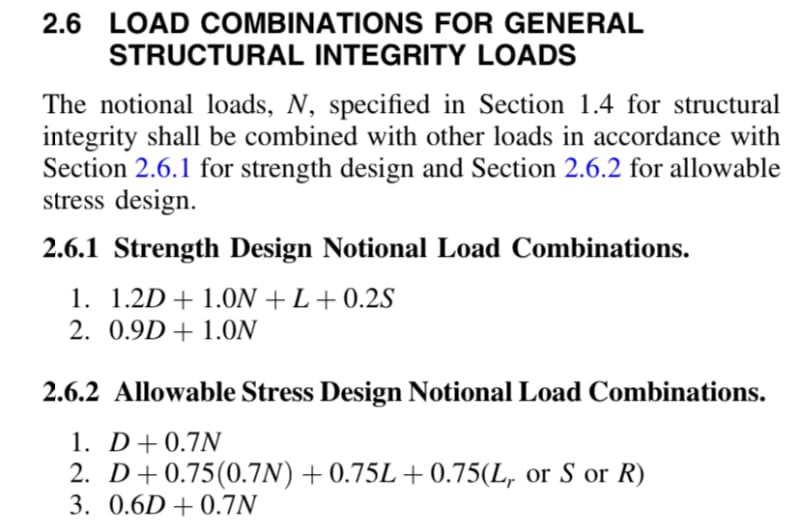What load cases/combinations would you recommend for an elevated equipment platform supporting equipment many times the weight of the platform itself? Lateral loads in particular.
Seismic design category A, Sds=0.149, structure is inside so no W/S/R loads, no Live load on the platform itself, though 1 side of the frame will also serve as an interior partition wall. Codes are not very clear about lateral loads on equipment platforms and I've seen suggestions to use as little as 1% of the dead load.
We were going to use 15% of the DL as E + 5psf L applied to the interior partition wall to design lateral bracing.
In this case 1.2D + 1.0E + 0.5L controls lateral bracing and lateral loads on anchors. Is it too conservative?
Seismic design category A, Sds=0.149, structure is inside so no W/S/R loads, no Live load on the platform itself, though 1 side of the frame will also serve as an interior partition wall. Codes are not very clear about lateral loads on equipment platforms and I've seen suggestions to use as little as 1% of the dead load.
We were going to use 15% of the DL as E + 5psf L applied to the interior partition wall to design lateral bracing.
In this case 1.2D + 1.0E + 0.5L controls lateral bracing and lateral loads on anchors. Is it too conservative?


